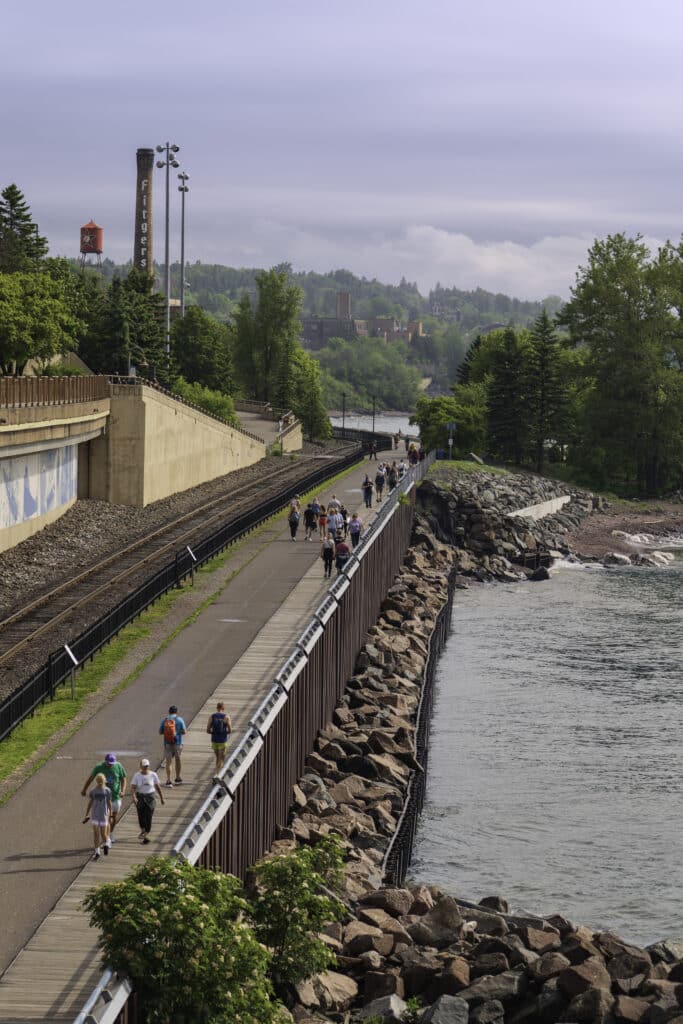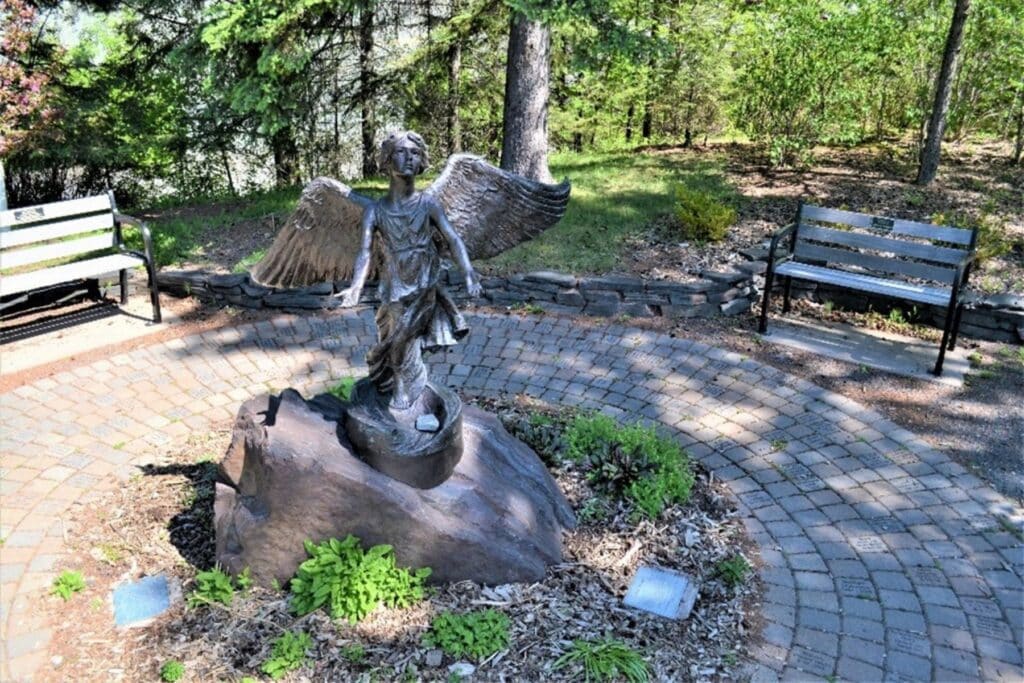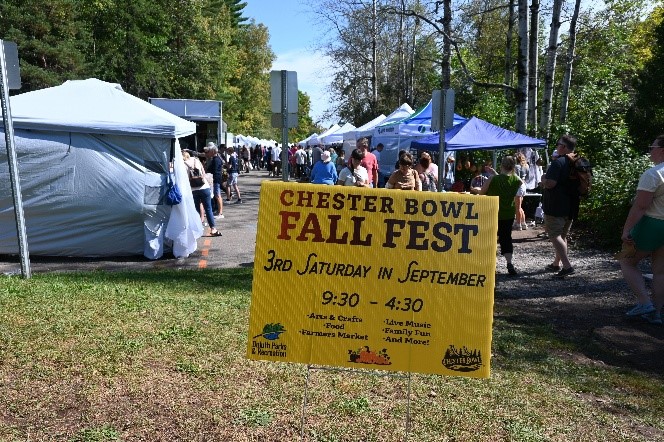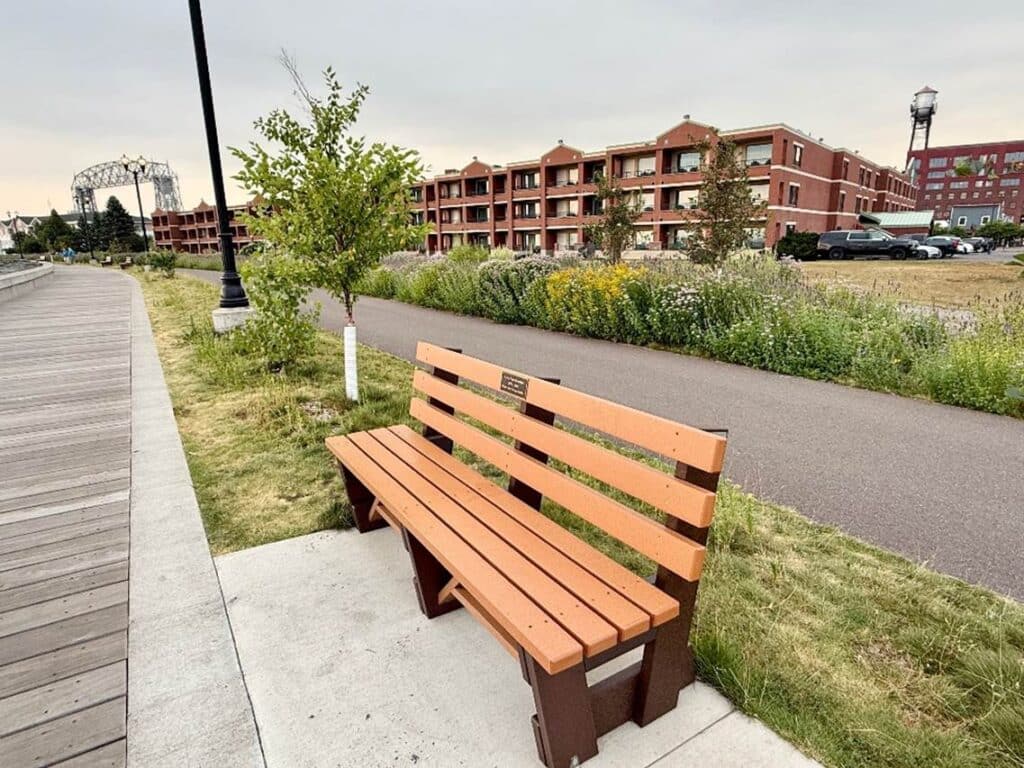
Did you know that every citizen of Duluth owns lakefront property—on the greatest of the Great Lakes?
The Duluth Lakewalk, an eight-mile, city-owned treasure, offers front-row views of breathtaking sunrises, 1,000-foot freighters gliding into port, and crashing waves that remind us of the lake’s power. At other times, it becomes a haven of quiet—an escape into peace and serenity just steps from the city.
This lakefront jewel belongs to all of us. You don’t need to be a millionaire to enjoy it. The Lakewalk is open to residents and visitors alike, 24 hours a day, 365 days a year.
INTRODUCING A NEW “Life Up North” SERIES – “Life on Your Lakewalk”
Throughout the summer and fall, Destination Duluth will share in-depth stories about a key reason why Life Up North is better. Our new series, “Life on Your Lakewalk,” explores how Duluth’s iconic shoreline was transformed from an industrial wasteland into one of the city’s most treasured public spaces—and, we proudly claim, is the best Lakewalk in America.
The story begins in the 1960s and early ’70s, when a bold fight was waged to stop the interstate from being built in Lake Superior. That battle was won by a visionary idea: to preserve the shoreline for public access and future generations. The result is what we now know as the Duluth Lakewalk.
Through compelling stories, historic insight, and stunning photography and video, “Life on Your Lakewalk” will show how this eight-mile stretch has become far more than just a path. It’s a symbol of community, resilience, and pride. It’s an essential part of what makes life better here—an integral piece of Life Up North. – Jerry Thoreson, Managing Director, Destination Duluth
Duluth waterfront in the 1960’s
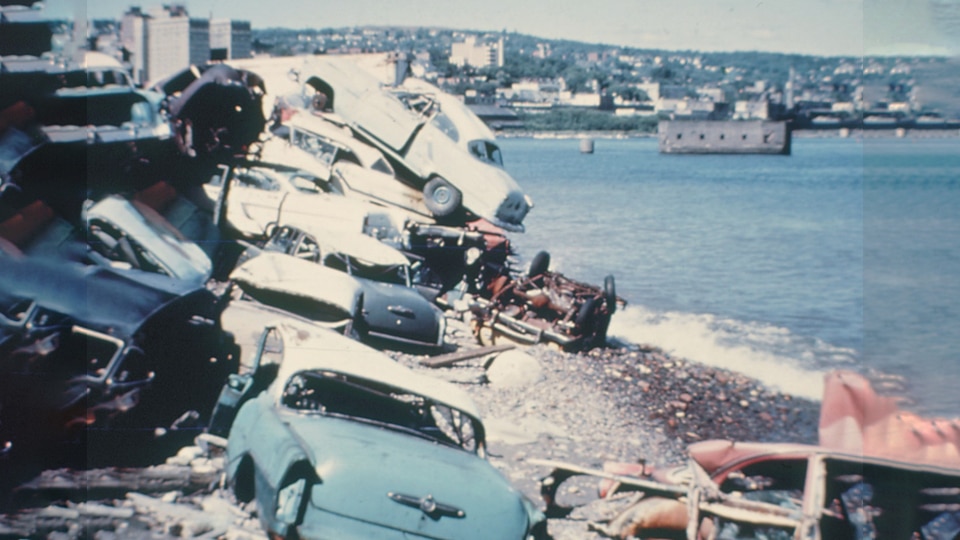

The Duluth Lakewalk in 2023 after $20 million restoration and reconstruction
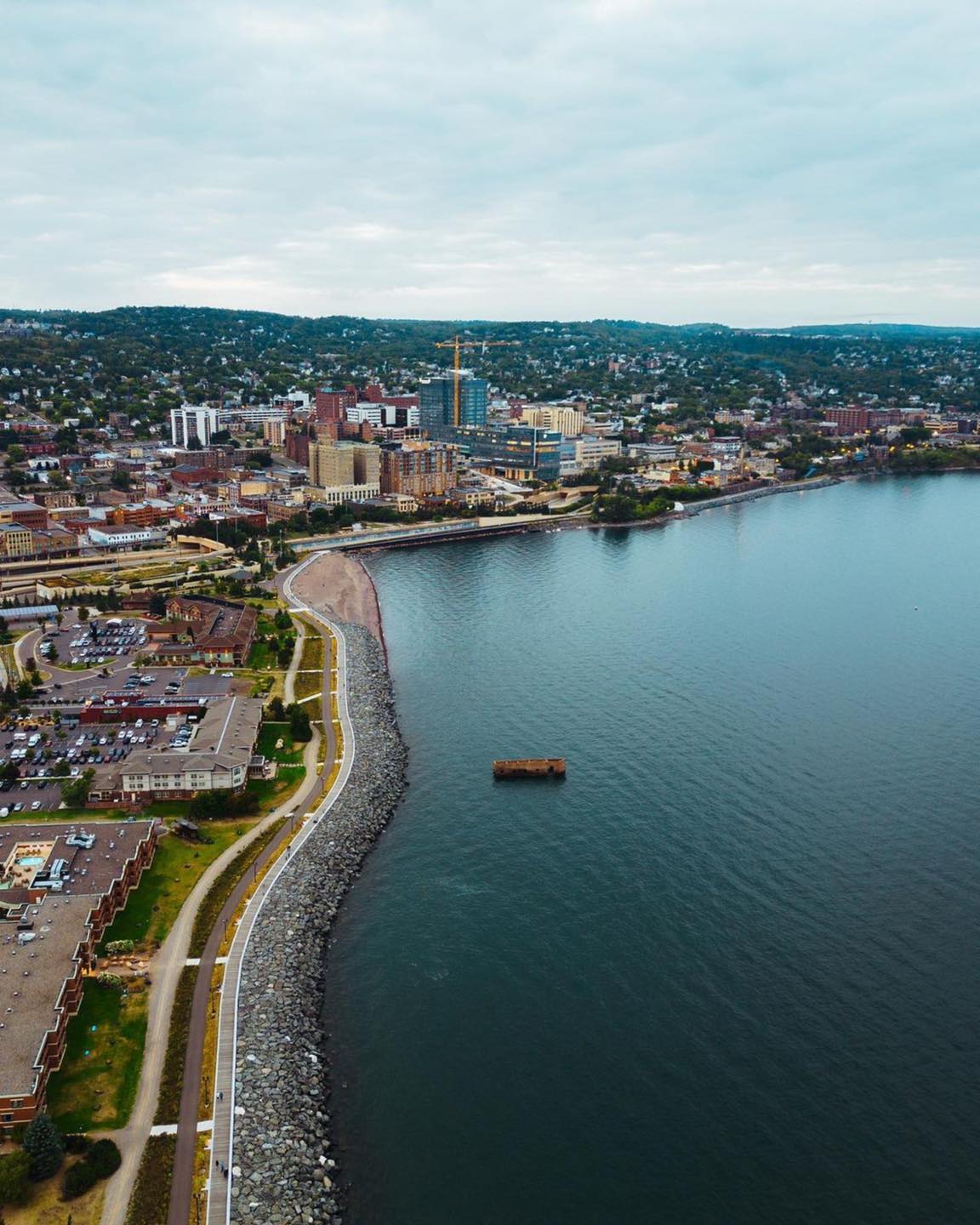
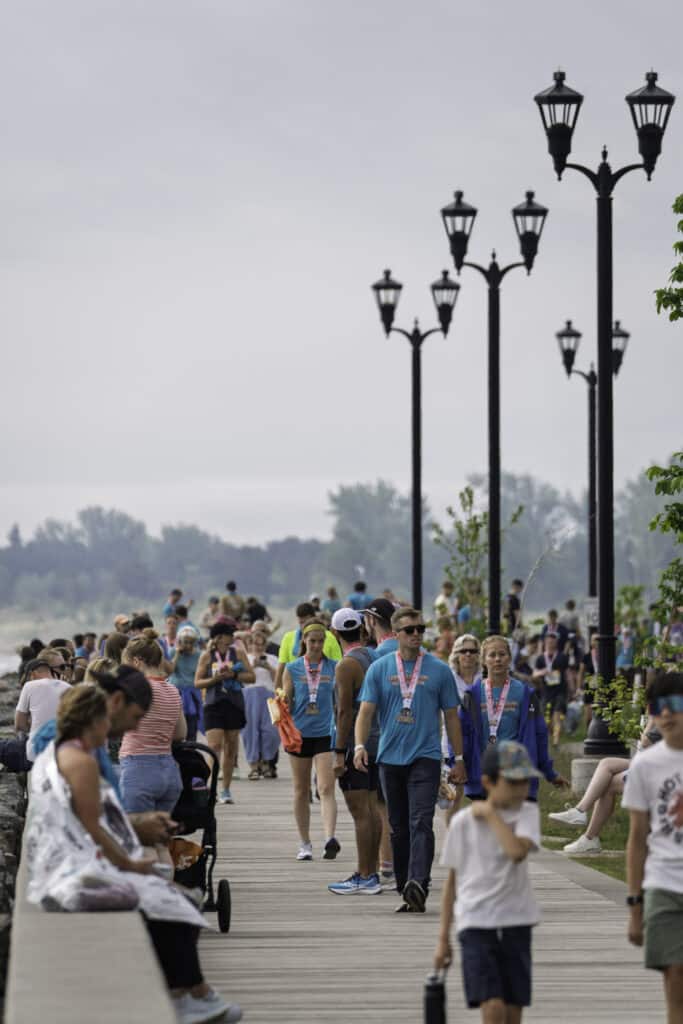
Photo by Glenn Blaszkiewicz
The Brand New Beginning of the Duluth Lakewalk
The first 4 miles of the Lakewalk clings tightly to Lake Superior. Starting at Bayfront Festival Park, beginning with the new $22 million seawall and yet-to-be-officially-named Harbor View Park.
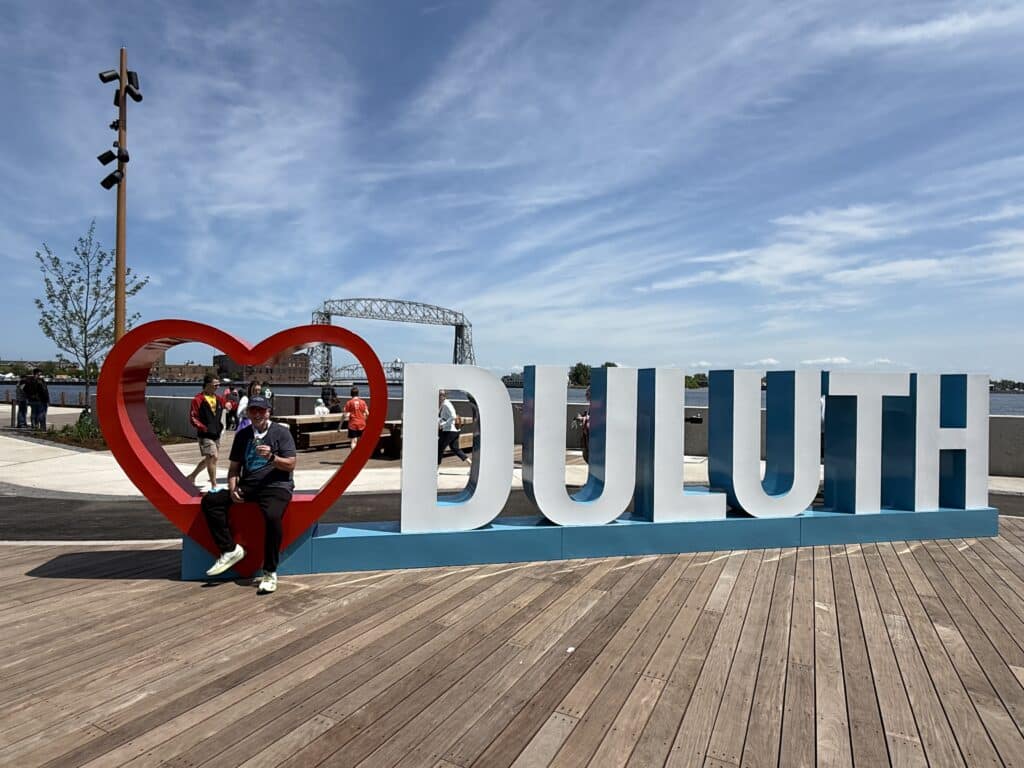

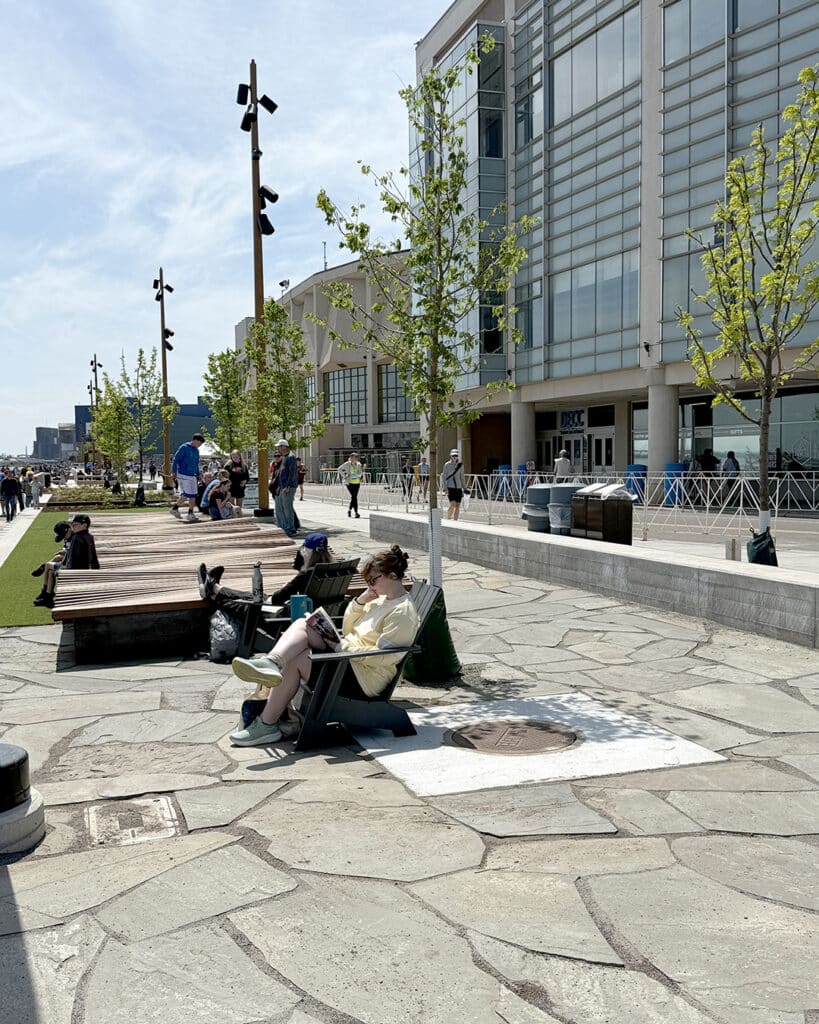
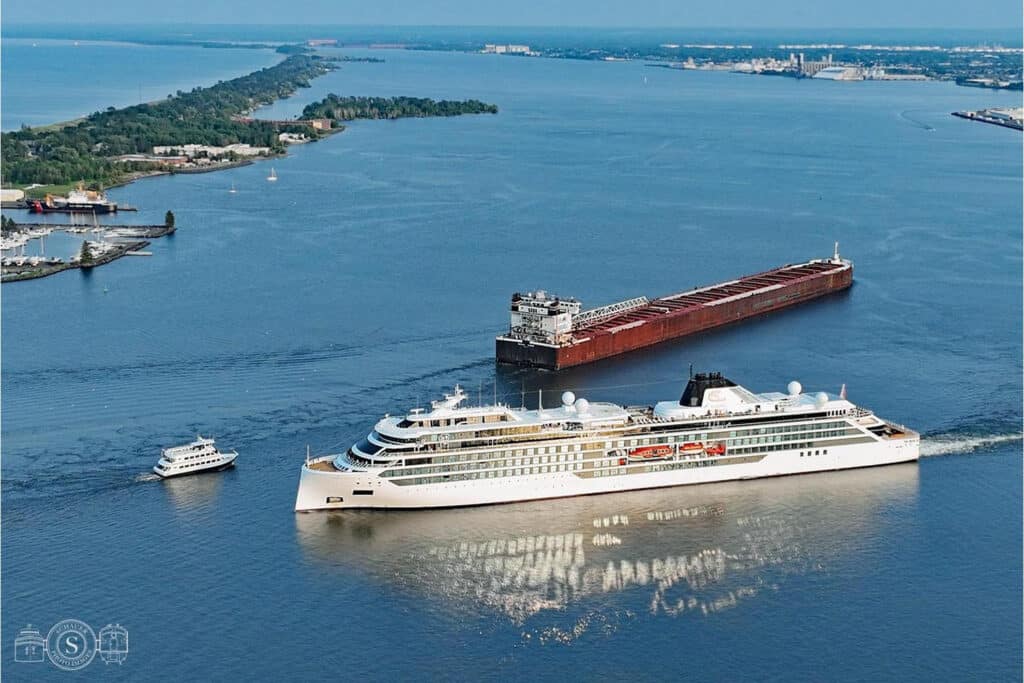
On the Duluth Lakewalk, amazing experiences present themselves at every bend; from peeping at massive ships in the harbor, to stopping to smell an abundance of fragrant blooms at our Rose Garden. One can also appreciate the different “moods” of Lake Superior at every bend along the way.
Many use the Lakewalk for jogging, biking, and strolling with their family. In the highest-traffic area near the North Pier, there are three pathways: the gravel path is used for horse-drawn carriage rides, the blacktop is for bikes and scooters, and the boardwalk is for pedestrians. Those living in East End can easily and safely commute by bike to work or downtown’s Harbor City International High School.
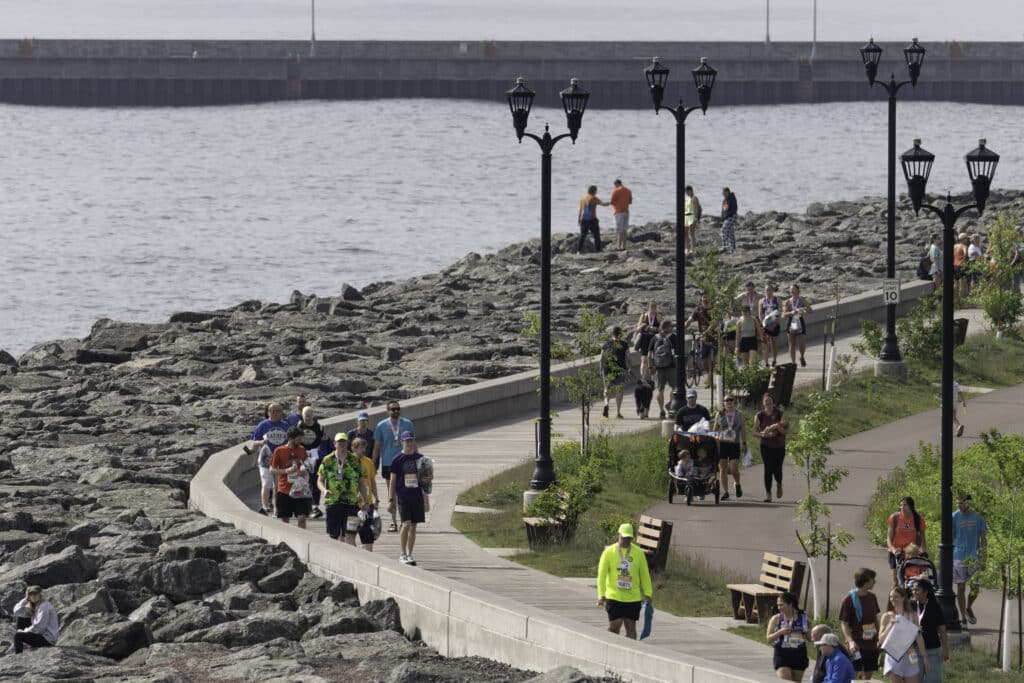
Photo by Glenn Blaszkiewicz
Historic destructive storms in 2017 and 2018 caused over $20 million in damage, tearing up the path and shoreline. Four years of major reconstruction brought major improvements, including new lighting, landscaping, benches, and massive boulders, which ensured shoreline protection.
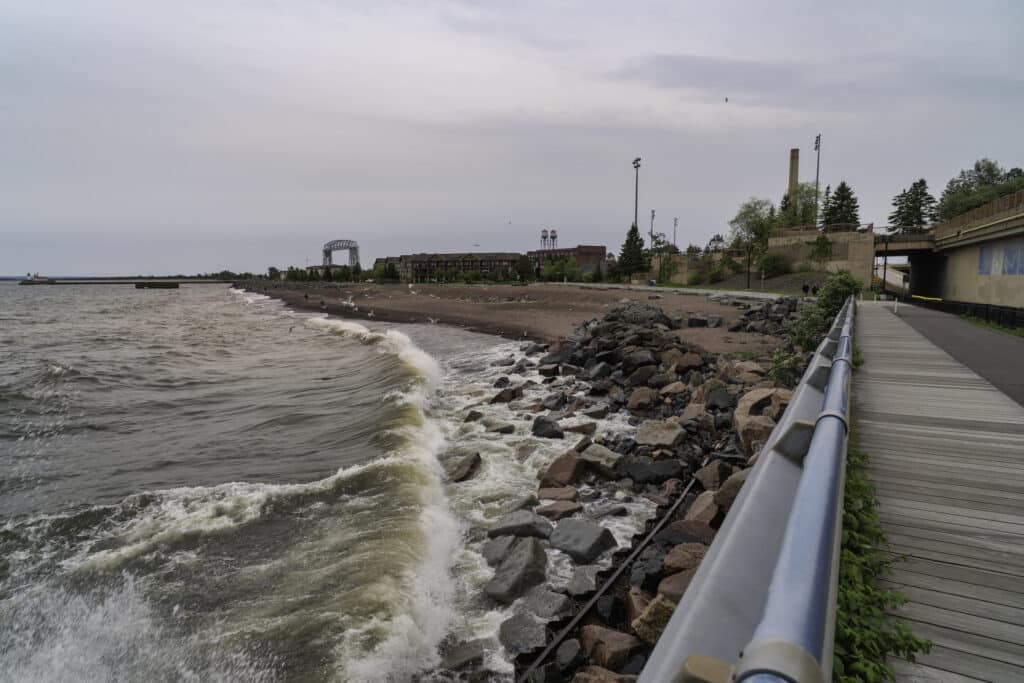
Photo by Glenn Blaszkiewicz
On the turn at the head of the Lake a stretch of wall features a gigantic mosaic mural of marine life. Above the wall is Lake Place Park in Duluth, which is now called Gichi-Ode’ Akiing, Objibwe for “Grand Heart Place.” On the other side of the wall is the I-35 tunnel.
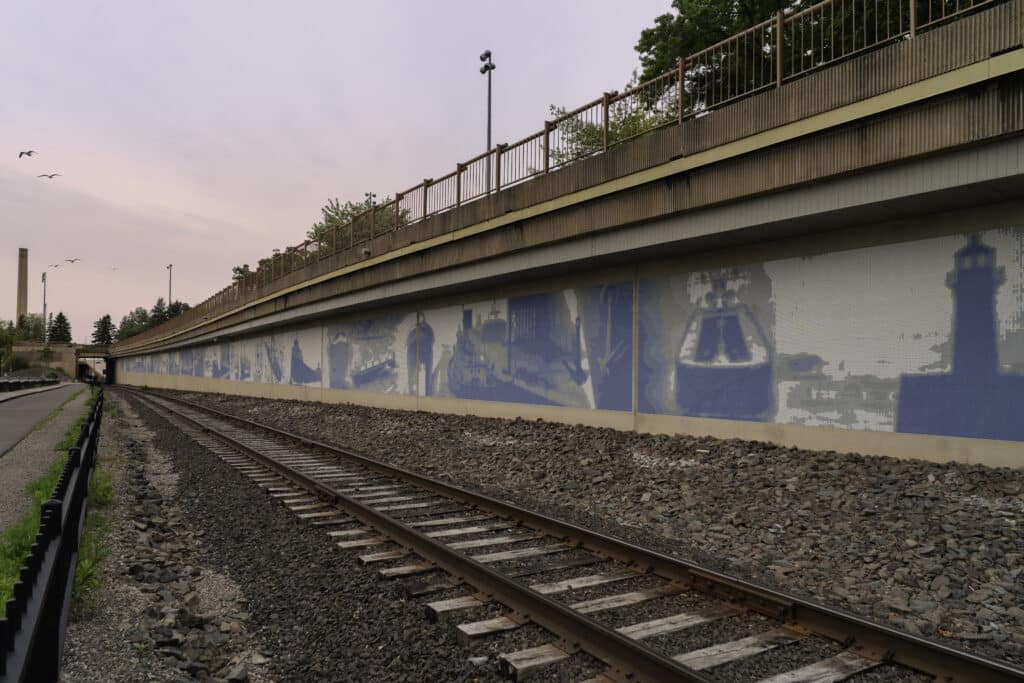
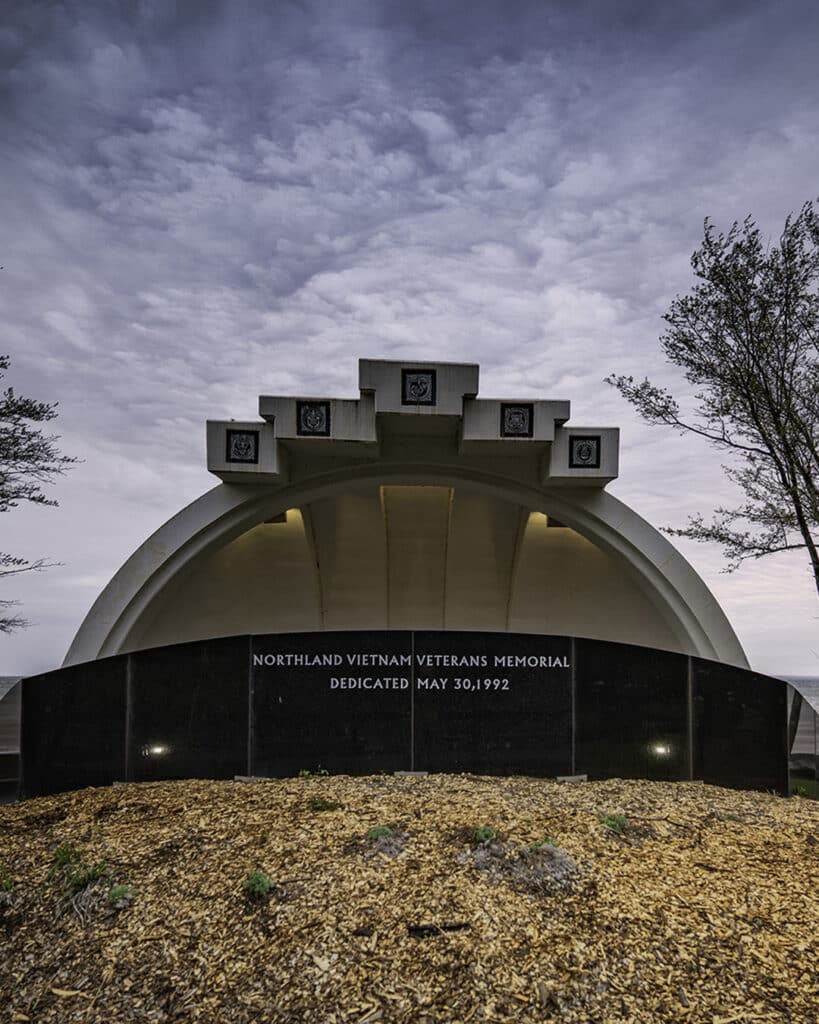
Photos by Glenn Blaszkiewicz
After turning the corner and passing the mural, visitors arrive at a solemn stretch of the Lakewalk dedicated to honoring local veterans of the Korean and Vietnam conflicts. The Vietnam Memorial, dedicated in 1992, stands as a powerful tribute to the 136 men and women from northeastern Minnesota and northwestern Wisconsin who lost their lives in the Vietnam War. Their names are etched into a black granite wall, evocative of the national memorial in Washington, D.C.
Read the Memorial Day story of three Northland soldiers who lost their lives in Vietnam here.
Next on the Lakewalk is the Fitger’s complex. Built in the 1880s as the Fitger Brewing Company, it now includes a hotel, restaurants, shops, and a brewery. The Lakewalk offers direct access to Fitger’s back-door and is a practical stop for dining and shopping.

Photo by Glenn Blaszkiewicz
The Lakewalk runs through Leif Erikson Park
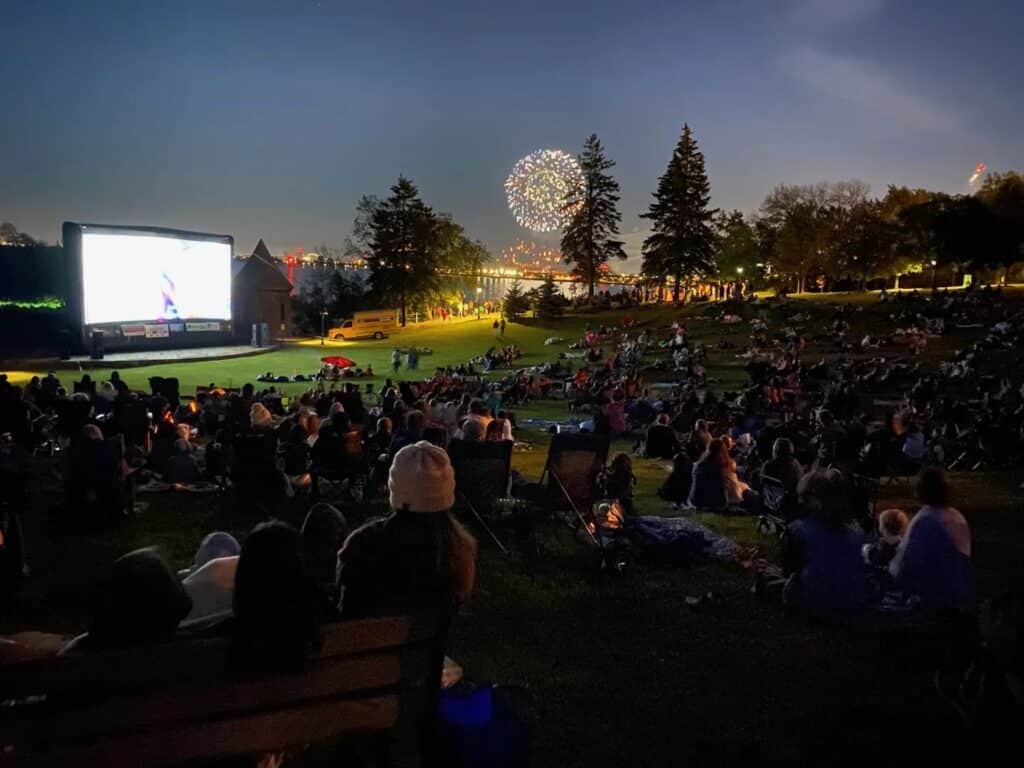
The Duluth Rose Garden
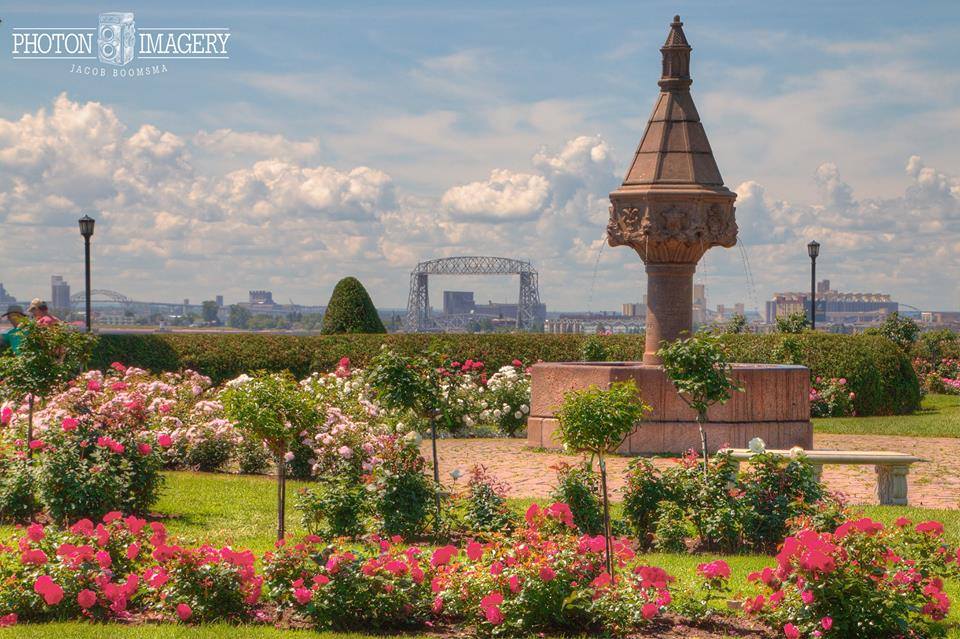
The Duluth (Leif Erickson) Rose Garden features approximately 195 different rose varieties, showcasing over 2,600–3,000 rose bushes meticulously cultivated by the Duluth Rose Society and city staff

After the Rose Garden is a section of the Duluth Lakewalk that many haven’t discovered running parallel to the highway and features many areas of benches, picnic-tables, all directly on the Lake Superior shoreline.
Where I-35 ends the is a tunnel which leads to a beautiful wooded trail section of the lakewalk running parallel to the Congdon Blvd mansions, and returning to the shoreline at the Lester River.
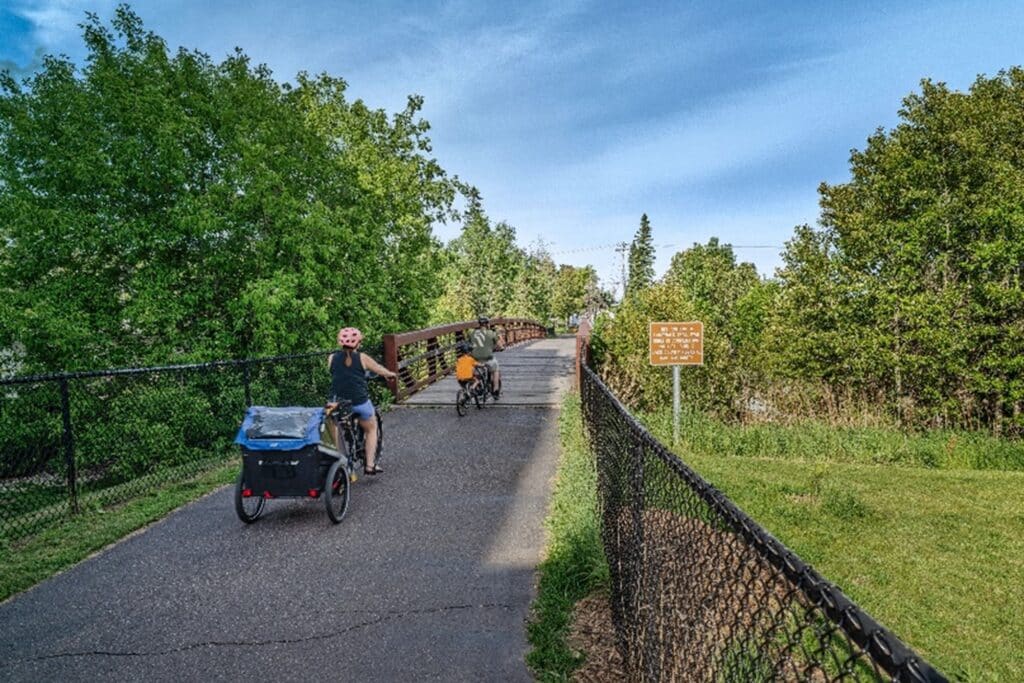
Photo by Glenn Blaszkiewicz
Brighton Beach is the grand finale of the Duluth Lakewalk
After severe storm damage in 2017–2018 eroded the shoreline and infrastructure at Brighton Beach (Kitchi Gammi Park), Duluth undertook a $6.4 million restoration project focused on climate resilience and ecological sustainability.
Completed in 2024, the redesign relocated the roadway inland, extended and separated the Lakewalk, stabilized the shoreline with stone revetments and native plantings, and added accessible amenities like picnic areas, vault toilets, and hammock stands.
The project emphasized a “managed retreat” strategy—moving infrastructure away from the lake and restoring a natural coastal forest buffer—ensuring long-term protection from future storms while enhancing public access and enjoyment.
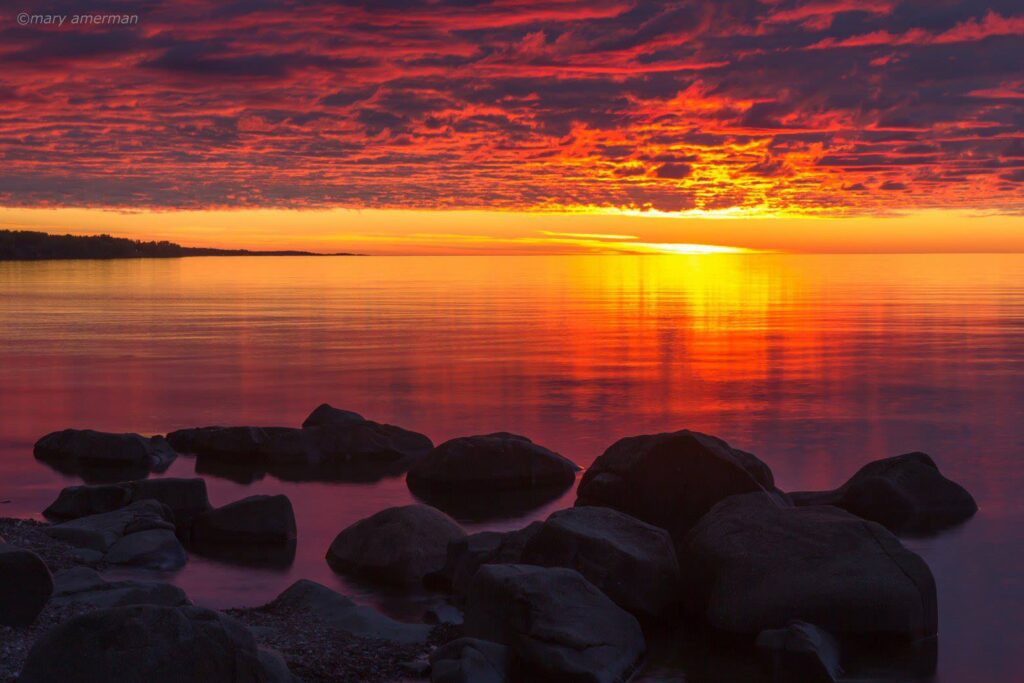
Visitors invited to make the Lakewalk theirs.
Residents of Duluth welcome roughly 6.7 million people each year to share in the experience of the Lakewalk. This translates to an economic impact of over $780 million annually. More than just a scenic trail, the Lakewalk is a major part of Duluth’s appeal—a sparkling jewel that draws countless visitors to conclude that “Life Up North” is a better alternative than life in a concrete jungle.
But the Duluth Lakewalk is more than a path along the water—it’s a living symbol of what this city values most: public access, natural beauty, history, and community. Spanning eight miles and decades of vision, investment, and resilience, it reflects the spirit of Duluth itself. Whether you’re a lifelong resident or a first-time visitor, the Lakewalk is yours to enjoy. It’s your view, your shoreline, your legacy. And it’s one of the many reasons why Life Up North is better.

